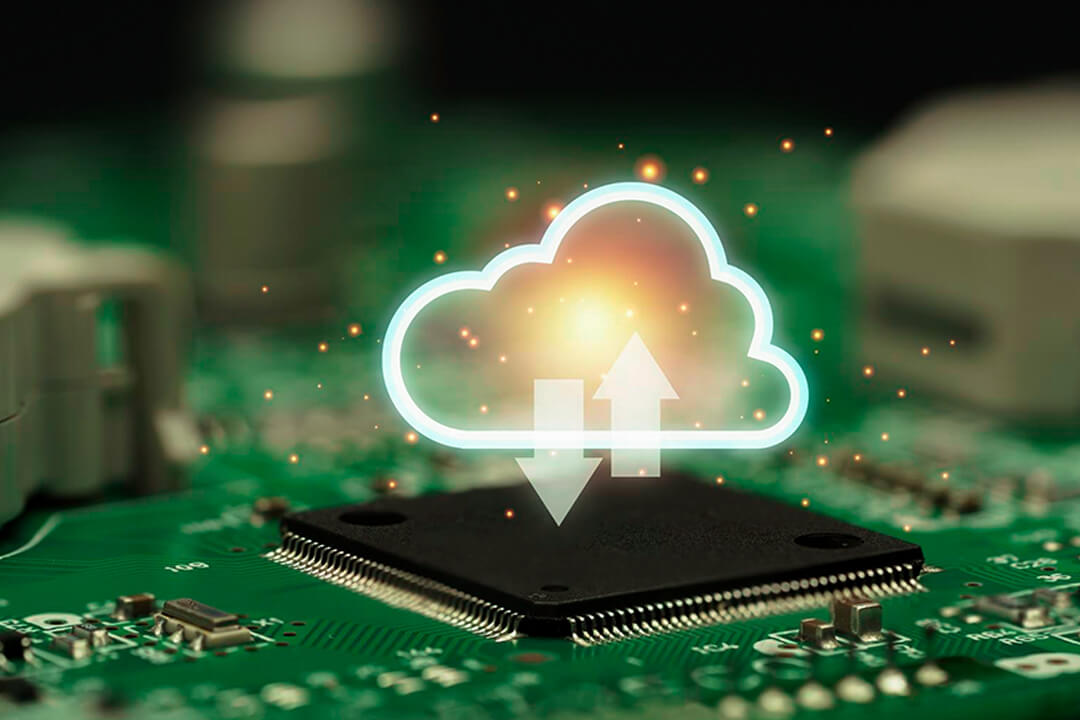In this digital experience economy, we are in, experience has become the competitive differentiator. In this economy, digital efficiency is key for growth. On the other hand, the non-recognition of the need for digital transformation leads to elimination or, at the least, stagnation. The recognition of such need is not just even limited to businesses but even to non-profit organizations or anyone who wants to share anything of value for the well-being of others. To reach your target audience, and thereby be seen and heard, it would greatly help to pay attention to software development trends as they are key tools that would bring you to your desired outcomes, including growth at speed, at a fraction of a cost, and with digital efficiency. Some have even taken advantage of tapping into a software development company for a faster route.
The distributed market
One major factor accelerating the need for innovation and digital transformation is the case of the distributed market. When the COVID-19 pandemic struck, one-stop shops, malls, event venues, workplaces, even travel-goal destinations became empty. Moving forward, the demands for remote access, digital transactions, hybrid work, and seamless hybrid experiences seem here to stay. For reasons such as these, advancements in technology have accelerated and strategic technology trends are geared toward bringing solutions directly to the distributed market and, as a result, highlighting a seamless hybrid experience as the competitive differentiator.
To maximize and deliver the benefits expected of the developing technology trends, there are also observable software development trends that are catching up, basically to make those new technologies, i.e., as tools, work more efficiently. Some even already have “smart” or “no-code” features so one can skip the nitty-gritty part of the process and move on to actually making use of them. Of course, already ahead are the innovators who have foreseen all of these and thus have kept ahead. If you still need to catch up, you may find a shorter route by partnering with a software development company.
Related articles:
Software Development Outsourcing Pros and Cons 2022
6 Consumer Trends to Keep in Mind for Online Marketing 2022
The above considerations are important to distinguish the trends we need to pay attention to from the hype that may distract us. For example, there were already 2022 predictions as early as the third quarter of last year. With the first quarter of 2022 already past us, we can already filter the actual trends from just the hype. Do you need, now, to outsource a software development company?
Let’s navigate through the top software development trends and the top strategic technology trends for 2022 with the above reasons, considerations, and direction in mind.
General trends in software development
The presentation below follows a Forbes November 2021 article’s thematic approach of putting together into three groups Gartner’s 12 Top Strategic Technology Trends for 2022. You may also find our takeaway regarding this in a related article, “The Latest Trends in Software Development.” For this current article, under each group, we classify Towards Data Science’s enumerated predictions about the software development trends in 2022.


Group 1: Automation
In his Forbes contributed article, Steve Andriole, a business technology professor at Villanova University, groups the following from Gartner’s top strategic technological trends into the basket of Automation. These are decision intelligence, hyper-automation, AI engineering, autonomic systems, and generative AI.
Analytics became a trend more than two decades ago. Now, we hear about “decision intelligence,” the continuous developments of the same concept with the idea of pushing further the limits of what we can achieve through automation. Along with this, we now also have the terms “hyper-automation,” “autonomic systems,” and AI developed through engineering or that of the generative kind.
Automation, however, is not new. Any introduction of systems that would increase productivity while reducing time and cost is in the general ambit of automation. Steam engines, assembly lines, ATMs: those are all innovations in automation. On the health and safety side, around a third of tasks that used to need human operators in the high-risk category have benefited greatly from automation. Not only that, but automation’s top-selling points are that it (a) increases productivity, (b) maximizes profit, and (c) frees the employees from routine to tasks that right now are still unimaginable.
All those benefits have kept the demand rising, such that we also keep having a shortage of specialists and experts. On the other hand, many companies just want to get the tools, equipment, or adopt automation without hiring a full-time, expensive expert. Now, those demands and anticipation of more utility and more benefits provide an upward swirl, now even becoming more rapid, towards further development of software and technology to further provide the increasing need for further automation.
Within the horizon this 2022, we are seeing the following.
Mass adoption of AI
We can recall how AI became a disruptive technology, gaining adoption and rapid growth in the recent decade. Of course, we can expect it to gain more adoption, more funding, and more transformation this year and beyond. However, while the search for General Intelligence continues, that is, where AI finally becomes smarter than humans, a more practical AI seen needed now is Narrow AI. Artificial Intelligence can greatly help in assisting or augmenting human tasks in particularly narrow fields. Adoption of Narrow AI has begun, for example, in IT, BPO, and call centers, Narrow AI is used to assist human agents in more efficient performance of tasks, maximum results, and, of course, client satisfaction.
Democratization of Machine Learning
When people talk about AI, it usually is about Machine Learning (ML). In introducing “machine learning” in 1959, Arthur Samuel defines ML, basically, as where a computer system learns how to perform a task rather than being programmed to do so. But, as said earlier, there is a shortage of experts and companies are, as much as they can, avoiding the need to hire expensive, full-time experts. Thus, the progress in ML is moving towards AutoML (Automatic Machine Learning). We are seeing more adoption and applications of AutoML this year, as well as more transformations and innovations of AutoML in the vaster market ahead. P&S Intelligence, for example, predicts AutoML’s market revenue to surpass $14,830.8 Million by 2030.
Deep Learning libraries
Deep Learning is a subset of ML. It is where neural networks (mathematical models that are able to tweak internal parameters to change what they output) are expanded into sprawling networks with a large number of sizeable layers that are trained using massive amounts of data. Deep neural networks are working in the background of what we see as the ability of a computer to carry out tasks such as speech recognition and computer vision. For these, we have AI libraries (TensorFlow, PyTorch, among others) competing to be the dominant AI library for better visualization and mass adoption.
Related article: How AI Has Revolutionized Customer Service

Group 2: Infrastructure
In this group, we have “data fabric,” “cybersecurity mesh,” “privacy-enhancing computation,” and “cloud-native platforms.”
As data is always essential to operational and strategic effectiveness, the continuous aim is to make data available everywhere. Whether at the business level, economy, or country, there is a need for a data infrastructure to provide a basis in forming strategic decisions and cost-effective directions. Thus, the trend to maximize the use and the availability of cloud data, technology, and computing continues to grow.
Cloud centralization, decentralization on the edge, multi-cloud
We are continuing to see the public cloud replacing regional data centers. This creates an environment where the public cloud could become the go-to infrastructure for startup businesses, enterprises, and even governments. Gartner forecasts the cloud to be the centerpiece of the new digital enterprise, predicting a 16% revenue increase in public cloud use this 2022.
Key terms
A private cloud is a cloud computing service delivered through the internet but completely controlled by a single organization for its own use. When the service is shared with others, it is referred to as public cloud. A hybrid cloud is an environment that uses both private and public clouds.
As cloud centralization continues, traffic at the center also continues, and ways of going in and around are still in continuous development. With that happening, dependence on too much centralized data is, at least for now, unhelpful for autonomous vehicles in development especially in deciding whether to veer right or left to avoid a pedestrian. An onboard computer that could function independently, and not always dependent on the centralized cloud would be more practical. This goes as well for navigation apps, or most mobile apps for that matter, whose performance would greatly be hampered by reduced latency. A decentralized approach would be better for these, thus: edge computing.
The basic idea for edge computing, according to The Enterprisers Project, is about placing “computer resources closer to the user or the device, at the ‘edge’ of the network, rather than in a way hyperscale cloud data center that might be many miles away in the ‘core’ of the network.”
Another concern regarding public cloud adoption is vendor locking. Moving your infrastructure, storage, and computing to a public cloud provider means you are locked in to a vendor. Towards Data Science observed that “many enterprises try to be wise and use multiple vendors to avoid vendor locking.” But that “there will always be vendor locking if you cannot use one public cloud in another public cloud.” A way around this is the reverse trend of API-compatible services for widespread public cloud services.
Enhancing Privacy and Security
However, since, such a digital infrastructure is open for use in analysis (top of mind: the open-source development model), it is also open to data sharing, consumption, and misuse. Perhaps a dark cloud over the public cloud is the concern regarding security. If public cloud security is compromised, then businesses, enterprises, and governments will be affected. Thus, there is always a need to strengthen cybersecurity if we continue to harness data, to make them always available for operational and strategic effectiveness. Furthermore, closely linked to data and the aspiration of a cybersecurity mesh is also the continuous worry and, thus, the trend of privacy-enhancing computation.


Group 3: Applications
Recently, there is an observable integration of old architectures, for each of their continued use, to an API culture of “composable” applications.
Key terms
A composable business, according to Gartner, means creating an organization made from interchangeable building blocks. Such an organization operates on four principles: more speed through discovery, greater agility through modularity, better leadership through orchestration, and resilience through autonomy.
An API (application programming interface) is a set of functions or protocols that allows applications to access data and interact with external software components, microservices, or operating systems. Basically, through an API, two applications can talk to each other, such as when you want to check for game results without having to leave a social media app.
The latest trend is about the movement toward composable applications. Composable, here, also means scalable, connected, and powered by machine learning. What we can expect, then, with the new applications is that they are developed with the idea of being composable. This means that we can expect them to be more competent, have better functionality, and can combine for a greater purpose.
Low code/no code and composable applications
The progress in software development has led to making it possible, even for a software development company, to build applications with minimal code. There are now even software developers who have skipped having to learn coding skills and just go straight to building apps with low or even no code. Now, the trend is about developing composable applications, making it “easier to use and reuse code, accelerating the time to market for new software solutions and releasing enterprise value” (Gartner).
Distributed enterprise
Regarding the “distributed market” mentioned at the beginning, the observed solution is the transformation of businesses into distributed enterprises. This now allows businesses to better serve the needs not only of the distributed market, today’s consumers, but also of their remote employees. Distributed enterprises also fulfill the demands coming from both ends, i.e., the consumers and the employees, for virtual services and hybrid workplaces. This has become possible because “distributed enterprises reflect a digital-first, remote-first business model to improve employee experiences, digital consumer and partner touchpoints, and build out product experiences” (Gartner).
Total experience
In a webinar, Gartner defines “total experience” (TX) as a strategy that creates superior shared experiences by weaving together four experiences: the multi-experience (MX), customer experience (CX), employee experience (EX), and user experience (UX).
In other words, all that has been said above about the observed software development trends are geared toward providing a total experience.
Related article: The Essentials of Customer Application Software Development
Staying ahead through outsourcing a software development company
With the continuous changes and rapid developments affecting the market, the competition within industries, and the environment, in general, there is unending need to keep moving forward to stay ahead. With those rapid developments, we also see that software development is a never-ending process. A March 2022 Forbes Technology Council article even says that a developed software only lasts half a year. This means that the developed software may need to be updated or even rewritten from scratch after just a few months to keep up with new market demands, integration of new features, and even new version releases of platforms and operating systems.
A go-to solution regarding this is hiring a software development company. Outsourcing a software development company is a more practical solution, rather than the costly hiring of a software developer or a team of software developers and engineers.
Companies need to quickly onboard quality developers. However, as said earlier, there is a shortage of specialists and experts and, also, many companies just want to get the tools, equipment, or adopt automation without hiring a full-time, expensive expert. So for these reasons, outsourcing becomes a practical workaround. But, to stay ahead, there is also a need to be quick on partnering with a software development company as soon as possible. Commit’s “2022 State of Tech Staffing” forecasts, from their research survey of 200 US senior leaders in hi-tech startups, that “software development outsourcing will grow 70% by 2023.”
Related articles:
7 Things to Consider Before Outsourcing Software Development
Outsourcing Software Development in Today’s Modern World
Five Best Countries in Software Development Outsourcing
StratAccess Inc., established in 2012, commits itself to finding its clients the right BPO for successful business solutions. The company focuses on transforming the landscape of business partnerships, especially in the need for digital transformation. This is important in order to meet, for example, the requirements of today’s small and medium-sized enterprises (SMEs). StratAccess consultants stand ready to help clients take a hard look at their business objectives, organization infrastructure, and operational practices.
We at StratAccess strive to build long-term relationships that extend beyond the typical vendor-client transactions. Our primary focus is to successfully promote and serve each client’s products or services as though they are our own. Combined with the skill and knowledge of the outsourcing industry, our company has positioned itself as a leader in delivering its clients access to qualified quality and cost-effective BPO referrals.



